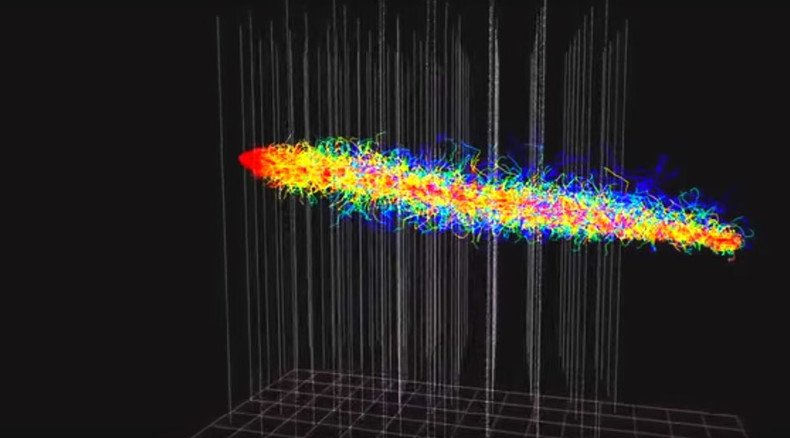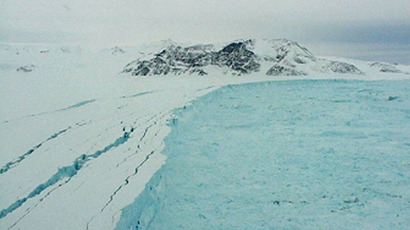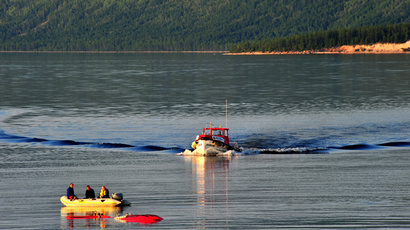'Ghost particles' from space found in South Pole ice

A neutrino observatory based in Antarctica has confirmed the detection of massless particles deep within the South Pole’s ice. They were created from astrophysical sources like black holes and exploding stars throughout the Milky Way and beyond.
The IceCube Neutrino Observatory employed 86 optical sensors buried 8,000 feet into the polar ice to detect light from high-energy neutrinos that, at the speed of light, pass through most mass with ease. Those neutrinos occasionally collide with an atomic nucleus, creating a muon, or a high-energy cosmic neutrino, that gives off what's known as Cherenkov radiation.
The IceCube observatory found 21 muons passed through its detectors between 2010 and 2012, according to a new report released in the journal Physical Review Letters.
IceCube confirms astrophysical neutrino discovery w/ independent search in the N. Hemisphere http://t.co/8WhHb9fcRDpic.twitter.com/hP5sg2h4JU
— IceCube Neutrino (@uw_icecube) August 20, 2015The project, led by researchers from the University of Wisconsin, had previously found neutrinos from outside our galaxy in 2013. To confirm the finding, researchers then had to prove the neutrinos were not coming from within our galaxy, such as from the sun.
IceCube also releases data associated with today's publication in PRL confirming the discovery of cosmic neutrinos: http://t.co/fKcQJEEBM5
— IceCube Neutrino (@uw_icecube) August 20, 2015Researchers say the presence of the muons proves neutrinos are traveling through space, unencumbered by stars, planets, or entire galaxies before meeting with atoms on Earth.
Each muon contains between 100 and 1700 tera-electron-volts, according to the researchers, who counted only muons that came from the Northern sky, passing through Earth, meaning the planet acted as a filter for the muons.
"Looking for muon neutrinos reaching the detector through the Earth is the way IceCube was supposed to do neutrino astronomy and it has delivered," said Francis Halzen, a physics professor at the University of Wisconsin-Madison and principal investigator of IceCube. "This is as close to independent confirmation as one can get with a unique instrument."
Found in Antarctica: neutrinos, our “astronomical messengers”
http://t.co/yFkIfLsXVXpic.twitter.com/e2OcTLckfO
— Popular Science (@PopSci) August 21, 2015The exact point of origin for these neutrinos is yet to be determined, researchers said.
"The plane of the galaxy is where the stars are. It is where cosmic rays are accelerated, so you would expect to see more sources there," said the study's senior author Albrecht Karle, also a UW-Madison physics professor. "But the highest-energy neutrinos we've observed come from random directions."
"It is sound confirmation that the discovery of cosmic neutrinos from beyond our galaxy is real," he added.
READ MORE: Black hole at Milky Way center may be emitting mysterious neutrinos, NASA says
IceCube's findings will allow astrophysicists to study the particles that have traveled millions of light years between their origin and Earth, giving new insight into how particles accelerate throughout the universe.
"IceCube collaborators address several big questions in physics, like the nature of dark matter and the properties of the neutrino itself," according to the project's website. "IceCube also observes cosmic rays that interact with the Earth’s atmosphere, which have revealed fascinating structures that are not presently understood."














